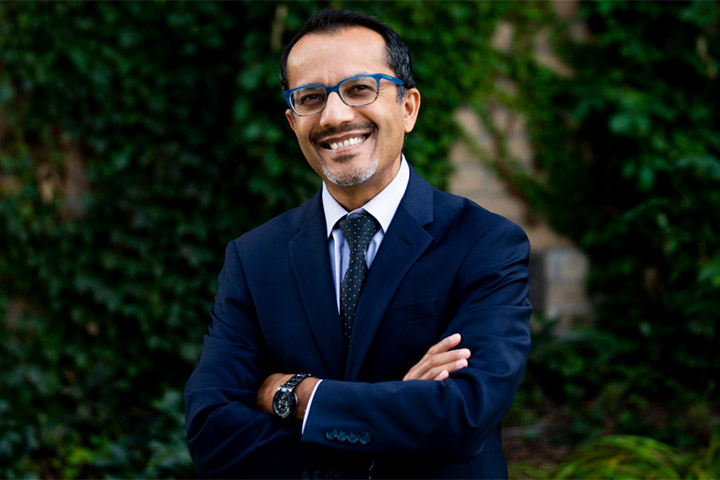Chemotherapy Plus Immunotherapy Trial Shows Promise

Chemotherapy is a mainstay of pancreatic cancer treatment, regardless of a patient’s stage at diagnosis.
When a tumor is surgically removable, chemotherapy may be administered before and/or after surgery. If a patient has metastatic disease, chemotherapy is part of the treatment plan to slow or stop the growth and spread of the cancer.
The most common regimens are gemcitabine in combination with nab-paclitaxel, and FOLFIRINOX, a cocktail of four different drugs. Response rates hover around 25 percent for the gemcitabine/nab-paclitaxel regimen and about 35 percent for FOLFIRINOX.
In the late 1990s, gemcitabine became the standard first-line treatment for patients with tumors that could not be surgically removed or those with metastatic disease. When nab-paclitaxel was added to gemcitabine, survival improved by only 1.8 months, compared to gemcitabine alone. FOLFIRINOX improved survival by 4.3 months compared to gemcitabine alone.
That’s why researchers are continuing to look for better combination regimens, such as chemotherapy combined with immunotherapy, to boost the odds for patients. “We absolutely need to expand the arsenal,” says Gulam A. Manji, M.D., Ph.D., assistant professor of medicine at Columbia University’s Vagelos College of Physicians and Surgeons and co-director of The Pancreas Center at the Columbia University Irving Medical Center (New York).
Manji is leading a new combination chemoimmunotherapy phase II trial called Chemo4METPANC. “Immunotherapy alone or in combination with other treatments has improved outcomes for patients with breast, lung, and other cancers, but so far it hasn’t proven as effective in pancreatic cancer. This means that we have yet to find the right combination, which is difficult, but not impossible,” he explains.
Early in his career, Manji saw a pregnant woman in her 30s with pancreatic cancer. The lack of available treatments astounded him and ignited a desire to find better therapies. “We’ve come a long way in the last decade, but we still have a long way to go to make pancreatic cancer more treatable, improve long-term survival, and to overcome eventual treatment resistance,” he says. “So far, our early results on this trial (Chemo4METPANC) are very promising, and I’m guardedly optimistic as we move forward. Patients don’t need promises. What they need are positive results.”
A Novel Combination
The addition of immunotherapy to chemotherapy regimens is being tested in many clinical trials, but Manji and colleagues have sought to take things a step further, by concurrently amplifying the immune response during chemoimmunotherapy. The chemokine receptor CXCR4, often expressed on pancreatic cancer cells, helps dampen antitumor immune responses. In preclinical models, blockade of CXCR4 has been shown to synergize with inhibition of the PD-1/PD-L1 immune checkpoint.
Manji and colleagues launched the Chemo4METPANC pilot phase II clinical trial to test the combination of gemcitabine, paclitaxel, the PD-1 inhibitor cemiplimab (Libtayo®), and the CXCR4 inhibitor motixafortide (Aphexda®) in patients with advanced pancreatic cancer. Out of 11 patients treated with this regimen, seven experienced a partial response, three experienced stable disease, and one experienced disease progression. After a median follow-up of 13.4 months, three patients remained on treatment, and the median progression-free survival was 9.6 months.
Based on these pilot data, the Chemo4METPANC phase II trial was amended to become a randomized study, with planned enrollment increasing from 30 to 108 patients. The trial, sponsored by Columbia University, and co-supported by Regeneron and BioLineRx, is the first large, multicenter, randomized study evaluating motixafortide with a PD-1 inhibitor and first-line pancreatic adenocarcinoma chemotherapies. A poster of the amended clinical trial design was presented at the 2023 American Society of Clinical Oncology (ASCO) Annual Meeting.
From the Bench to the Bedside
Much of the preclinical work for this trial was done by Manji in a laboratory at Columbia led by Kenneth Olive, Ph.D., before Manji opened his own laboratory and continued the work. In Olive’s lab, mice are genetically engineered to develop pancreatic cancer with tumors similar to those found in humans so researchers can understand the biology of what occurs in those tumors. Manji’s lab studies immunosuppressive pathways important in pancreatic cancer.
One reason immune therapies have not been as effective in pancreatic cancer may be due to a defense created by pancreatic tumors. In mice, previous research at Cold Spring Harbor Laboratory (Cold Spring Harbor, New York) has shown that certain cells within pancreatic tumors release cytokines, substances that prevent immune cells from entering the tumor microenvironment. The researchers also showed that treatment with a cytokine inhibitor and a PD-L1 inhibitor (a type of immunotherapy) opened the gateway for immune cells and caused the tumors to shrink after only six days.
The research, published in 2013, inspired Manji, then a fellow at Columbia, to find out what would happen if mice were treated for longer periods of time and with different combinations of drugs, including gemcitabine, a chemotherapy drug that is suspected of having immune-modulating effects.
Only one regimen helped mice live longer: a triple-combination therapy of a cytokine (CXCR4) inhibitor (AMD3100), an immunotherapy drug (mDX400, a mouse version of a PD-1 inhibitor), and gemcitabine. In particular, the treatment that was most effective began with the CXCR4 inhibitor, which “unmasked” the tumor cells, before giving immunotherapy followed by chemotherapy.
“The key here was trying to ‘unmask’ the cells,” Manji says. “If they remained hidden, the treatment wouldn’t do much of anything. This triple combination boosted the ratio of T cells, the cancer killers to the regulatory T cells that keep cancer cells hidden from the immune system,” Manji explains. “It was really very exciting.”
The Future Looks Bright
Just recently, Manji was named the co-director of the Pancreas Center. Manji’s vision in this new position is to expand and develop translational research which will lead to novel treatment options for patients with pancreatic cancer. As co-director of this new program, Manji will lead bench to bedside research in pancreatic cancer.
He is passionate about the need for more pancreatic cancer patients to enroll in clinical trials. “This is a huge issue not only for the patients, but also for the researchers and the physicians,” he notes. “This is the only way we are going to make progress. Patients really should be in pancreas cancer-specific trials so that they can potentially benefit from cutting-edge medicines, and for investigators to learn whether the addition of these drugs to standard therapy are truly beneficial.”
Manji also hopes that more efforts are put into educating patients about clinical trials to overcome the “I don’t want to be a guinea pig” fear that some patients may harbor. “There is so much we need to do to educate patients, but also oncologists who may not treat many pancreatic cancer patients,” he says. “This is something that is very doable and there are many resources already in place. Pancreatic cancer treatment will markedly improve. I’m confident about that. But the only way we are going to improve treatment is through clinical trials.”






